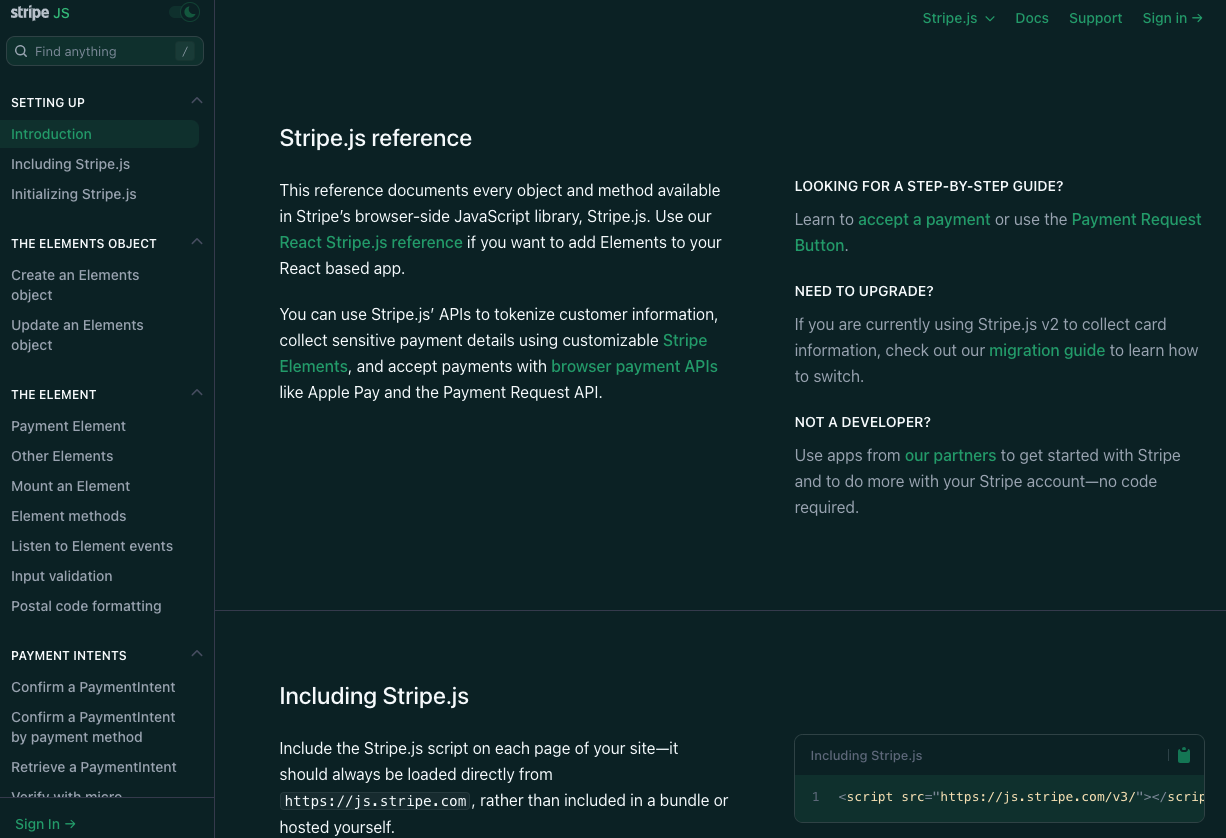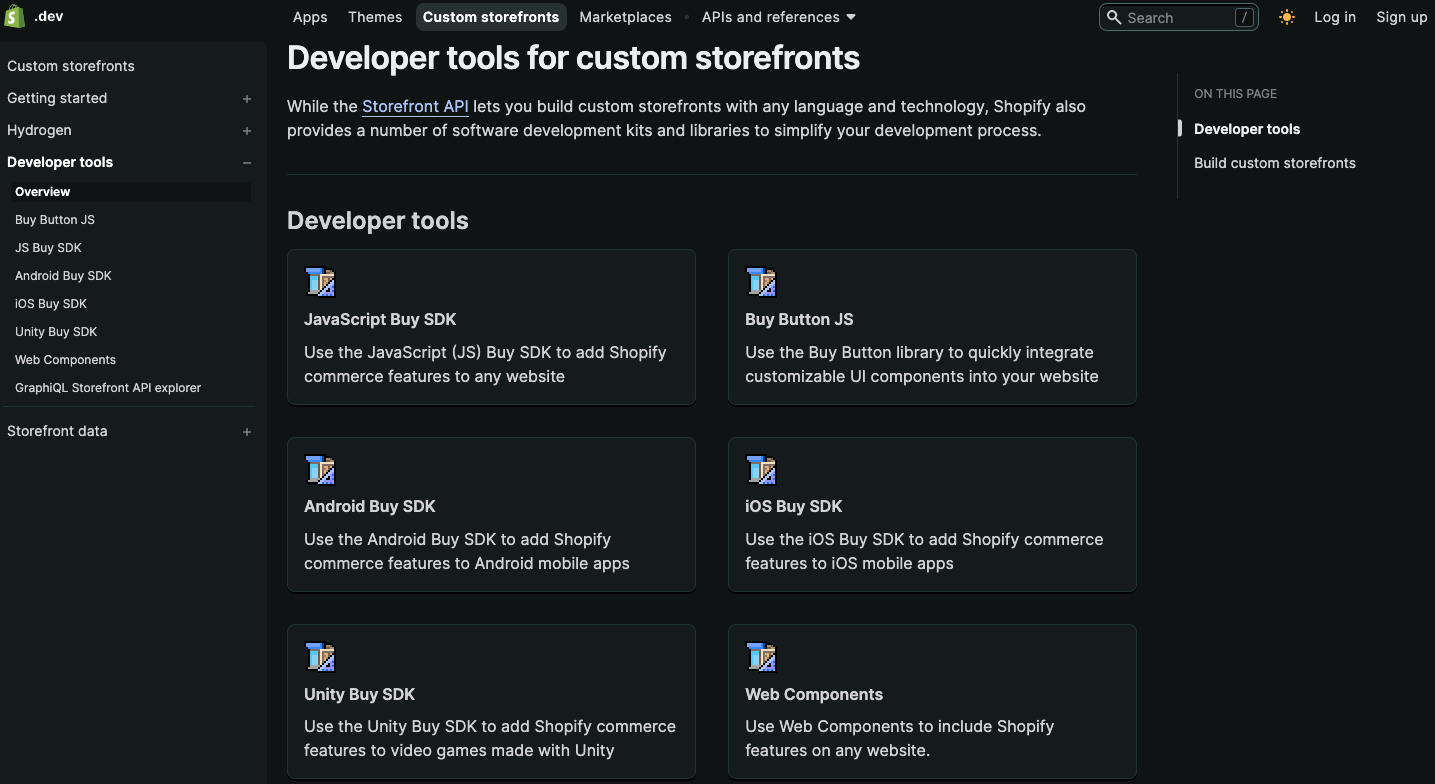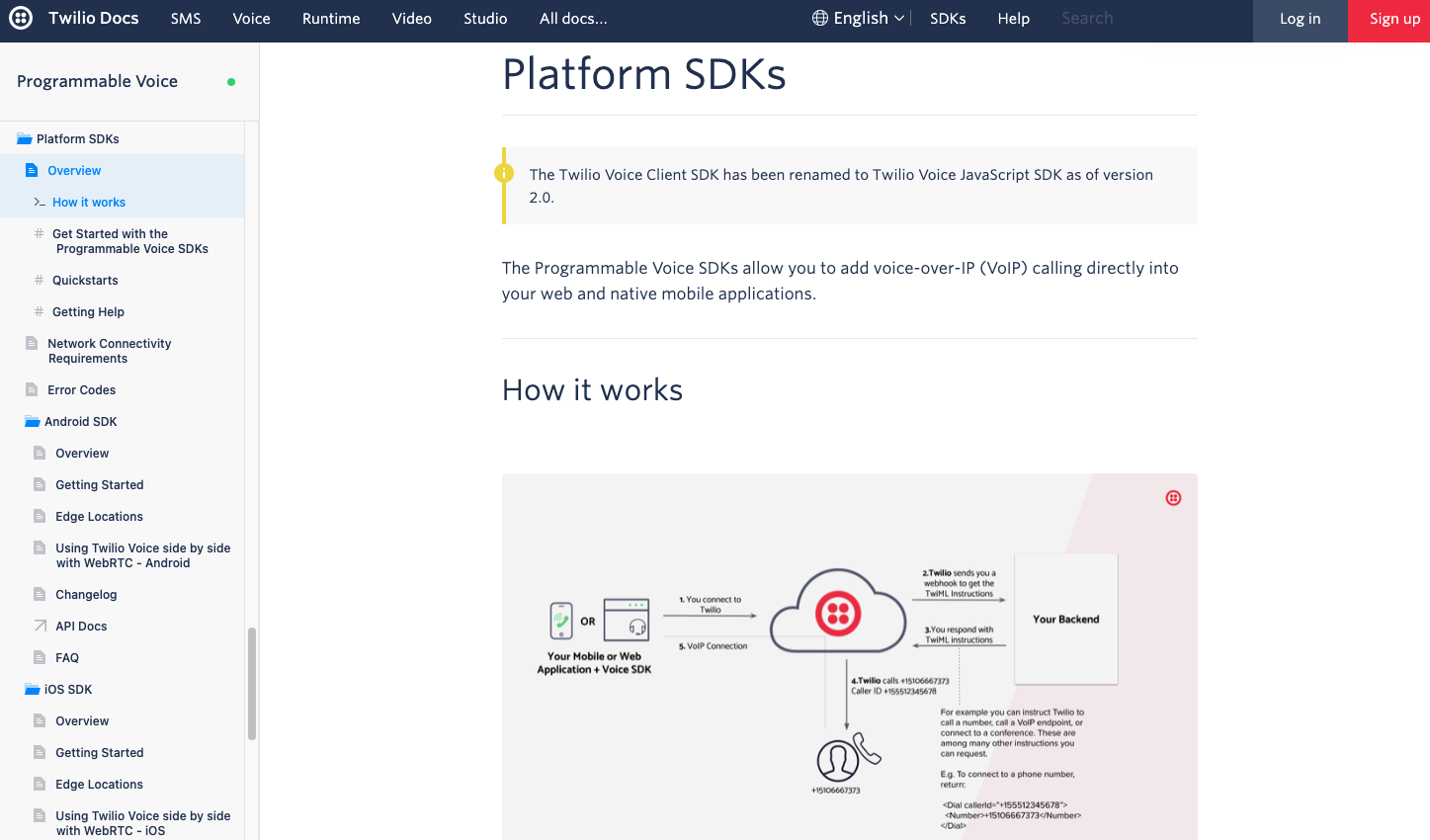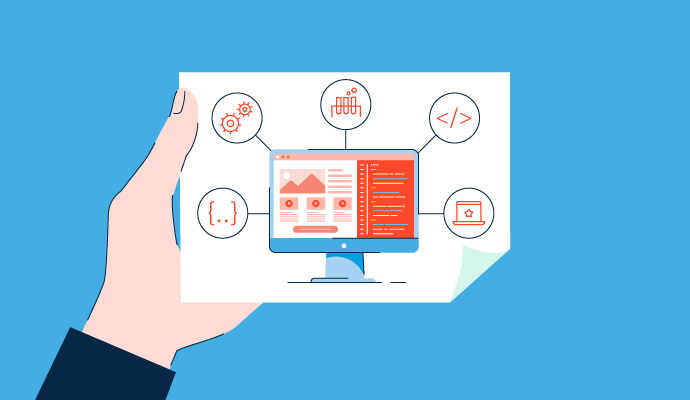Software developers love building things. The better the build, the better the end product.
I mean, you can't build a skyscraper in a single day. It takes time to create (and re-create) something of quality and value. This goes for developers when it comes to building applications.
As the internet becomes more complex, developers spend more time creating highly specialized applications. We're talking about everything from customizing your smart mirror to publishing your own podcast. With the introduction of mobile development platforms and a mobile-first approach to businesses, developing applications that stand the test of time is critical.
Software development kits (SDKs) play a crucial role in developing software. SDKs are tools to keep developers on track and help streamline their workflow simultaneously.
Think of an SDK as IKEA furniture. Assembling IKEA furniture isn't always easy, but imagine doing it without pre-assembled pieces, tools, and instructions for putting them together. Sounds impossible, right?
Without an SDK, developing an application is more like chopping lumber without a proper ax. You need more than just the pieces to build something. SDKs benefit developers and give businesses a way to create high-quality apps that address user needs, interact with online resources, and easily share data between apps.
What is an SDK?
A software development kit, or SDK, is a downloadable set of tools developers use to build applications for specific operating systems (OS). An SDK comprises everything you need to create a particular module within an app and includes libraries, tools, sample code, relevant documentation, and often application programming interfaces (APIs).
Also known as devkits, SDKs contain a variety of software tools depending on the function or feature you want to build into your application. Some SDKs help create platform-specific software. For example, developing an Android app on the Java platform requires a Java development kit (JDK). In contrast, iOS apps need iOS SDK, and integration with the VMware platform needs VMware SDK.
A decent SDK has all the components a developer needs to build new applications for a specific product and its environment. Some SDKs also contain a sample or basic test project to help developers start early. With an SDK, businesses can save time by rapidly and reliably integrating critical app services like payment, location, messaging, analytics, and advertising.
The best way to understand how an SDK works is to think about how a mechanic fixes cars. Ever noticed a mechanic's toolbox with all sorts of wrenches, pliers, screwdrivers, and other small gadgets?
This toolbox is super simple and highly specific. Although a mechanic might only use one type of wrench and not need every tool, they can still repair your car using those specific tools.
Like a mechanic's toolbox, an SDK gives you access to valuable and simple tools to create something great. When you have the right tools, solving challenging problems becomes more effortless.
What's in an SDK?
Individual software development kits are frequently modified for their platform. However, a typical SDK includes:
- Code libraries: Pre-defined pieces of code developers use to make their apps accomplish everyday programming tasks.
- Integrated development environment (IDE): A visual interface developers use to code, often seen in mobile software development toolkits. It includes a compiler that converts the SDK's source code's high-level programming language to a lower-level language to develop apps. For example, the IDE Xcode helps develop apps for Apple Mac computer (macOS), iPhone (iOS), iPad (iPadOS), Apple Watch (watchOS), and Apple TV software (tvOS).
- Application programming interfaces (APIs): Enable an application to access other services easily.
- Debugger: Debugging corrects small mistakes, making the application development process run smoothly.
- Code samples: Guide developers by showing them examples of the code in action and demonstrating how to apply it in simple steps.
- Documentation: Instructions for deploying the code. A decent SDK should have clear, comprehensive documentation.
Why are SDKs important?
To create a product, you need to find the right tools. You don't typically cut down a tree for wood or gather the components to make bricks, but buy these products instead. This is similar to developing an app. You don't reinvent the wheel. On the contrary, progress happens when you use the accumulated knowledge and build on it.
Software development kits add functionality to your app. SDKs make building the fairly standard app components faster and easier. It's best if you don't need to reinvent the process for a location feature or data storage. SDKs allow developers to build applications without writing the code from scratch. SDKs are often fully featured products that don't require integration with other components.
Technically, a developer could decide to forgo SDKs altogether, which would lead to a tedious and time-consuming coding process. Developers typically use SDKs for simple features such as logging in, location services, and mobile payments. However, SDKs also allow developers to build more complex app features, such as augmented reality (AR) and virtual reality (VR).
SDKs ease typical operations like creating authorization signatures or processing SMS messages in native languages or platforms, simplifying complex integrations.
Software development kits also help develop services that work correctly on a specific platform or with a particular provider. This isn't feasible if the programmer can't access an SDK. In fact, it's almost impossible to design software that functions in the given environment.
For example, Android developers cannot create Android apps without access to the Android SDK.
Want to learn more about Mobile Development Platforms? Explore Mobile Development Platforms products.
SDK vs. API
SDK and API are two of the most critical technologies in modern software design. They have a lot in common, and it's often difficult to discern their features. Both SDK and API allow users to quickly improve their software's functionality.
.png)
Application programming interface (API)
An API is essentially an interface for one software program to communicate with another. It specifies how a developer requests services from an OS or other applications and presents data in various contexts and channels.
For example, an API permits connectivity between Google Calendar and travel software. When a user schedules a trip, the API synchronizes with the calendar in real time.
APIs work on all operating systems (OS) and are widely employed on the internet of things (IoT) devices and device monitoring and management platforms. This makes them an excellent choice for businesses with proprietary operating systems and protocols, as well as for end-to-end vertical solution suppliers.
Most SDKs contain an API for connecting new mobile apps or projects at the source-text level using the command line. They often include code samples that provide developers with sample algorithms and libraries to help them learn how to build elementary applications. Developers can then easily optimize and develop complex products and troubleshoot and add new features as needed.
The most common APIs are:
- Web APIs enable users to interact with web browsers and devices and run their own web services applications.
- Simple object access protocol (SOAP) APIs are a preferred alternative for stringent data privacy and security.
- Open APIs (or Public APIs) and REST (or RESTful) APIs are common choices for ease of use and bandwidth optimization.
- JavaScript object notation (JSON) is a data-interchange format used for representing numbers, strings, and collections of name-value pairs. JSON-RPC is a remote procedure call (RPC) protocol and a popular choice for asynchronous server calls.
- Custom APIs ensure maximum adaptability in all aspects of program development.
APIs are lighter than SDKs since they don't require integrating an entire library into the app and are native to the development platform. APIs are great when you need a few specialized SDK functionalities, not a fully integrated experience.
Developers should remember that while APIs are less "plug-and-play" than SDKs, they frequently need additional code upfront. Finally, APIs are essential for applications where a codebase is written on non-standard platforms.
Software development kit (SDK)
An SDK is a collection of software development tools that includes building blocks, debuggers, and, in some cases, a framework or group of code libraries such as a set of routines specific to an OS. SDKs offer developers a variety of tools essential to delivering a distinct and consistent user experience.
SDKs are the source of practically any software that a modern user interacts with. Many services, such as your web browser or video games, are designed with an SDK before an API is deployed to interface with other apps.
SDKs are like a code library, a collection of non-volatile resources typically leveraged for software development. They wrap an API and use the API's communication protocols in the right and intended manner. They offer examples, documentation, and the methods required to perform specific tasks.
An SDK provides developers significantly more control than an API that collects information and exchanges it between two programs. With an SDK, developers can access all of the resources to create an app that interfaces smoothly with other platforms. Typical SDKs provide numerous APIs to make this possible. An API is only one tool of many offered in a standard software development kit.
SDKs contain solid functionalities that take a lot of the burden of software development. They help guarantee any API offered is appropriately implemented, avoiding the errors involved in its implementation.
An SDK often goes above and beyond by providing added functionality on top of APIs for a better user experience within the application. Finally, SDKs facilitate smoother upgrade pathways and manage deprecation for some lower-level APIs.
Key takeaway
- SDKs often include APIs, while APIs don't include SDKs.
- APIs help communicate but can't be used to construct new apps.
- SDKs enable developers to create apps and serve as a software product's foundation.
How does an SDK work?
SDKs provide a complete framework that allows software developers to create software applications more quickly and structurally. Using an SDK with ease is just as important as the tools included.
This is how an SDK works:
- A developer purchases, downloads, and installs an appropriate platform-specific SDK.
- Development starts within an IDE, where the actual code compiles. Developers can use the APIs included in the SDK to develop new apps.
- Businesses can use the instructions, documentation, code samples, and testing tools to build an app, giving the development team a good head start.
Some SDKs can also include regulations or conditions to be accepted before using them, especially for new applications in the alpha or beta stages or for software using algorithms that aren't publicly revealed (not open-source). An SDK can also be subject to a license agreement, ensuring that the developed software doesn't distribute under an incompatible license.
For example, a commercial SDK is inherently incompatible with open-source software development, but a General Public License (GPL) SDK is incompatible with commercial apps for legal reasons. SDKs created under the Lesser General Public License (LGPL) are often used for projects with proprietary code elements.
Elements of an effective SDK
When developing an application, SDKs provide features, such as payment, messaging, or authentication. Developers can't easily create these features in-house, and any mistakes can result in serious security risks.
Businesses now have hundreds of commercial and open-source SDKs to choose from. It can be challenging to find the best one for your use case. You need to evaluate rates and features when deciding the service provider and assess their SDKs.
Here are some things to look for in a good SDK:
- Documentation: Two SDKs could be strikingly similar, but if one provides extensive documentation that explains how to use it and the other doesn't, they're hardly comparable. Since an SDK is for developers, it should include precise, up-to-date, and valuable information, such as code samples and examples, to facilitate integration.
- Customization: Many SDKs resist personalization, which means businesses can only use them with their default settings. This is a problem when companies want to customize a product or integrate their branding or visuals.
- Scalability: If you want to grow your business, a decent SDK should flexibly scale with your applications.
- Security: It's critical to use SDKs from reliable sources to avoid unintentionally injecting malware or otherwise undesirable code into web or mobile apps. Businesses must ensure that their SDK secures user credentials and app data. It should also adhere to current requirements for opt-in permissions flows.
- Ease of use: A quality SDK includes instructions and sample code. Robust SDKs allow developers to access a trusted community or technical support if they encounter any issues.
- Integration: The recommended integration time for SDKs is between 5 and 10 minutes. However, this varies depending on the type of SDK. SDKs shouldn't be excessively complicated to integrate and reasonable with minimal assistance.
- Efficiency: SDKs can negatively affect the CPU and discharge the device battery. Businesses should use an SDK that accomplishes tasks with the least feasible code. If you're re-architecting an existing application, consider how much code your current solutions use and whether an SDK would be more lightweight. Fortunately, many SDKs are lightweight and have a low impact on battery life.
SDK examples
SDKs allow programmers to extend their app's functionality and integrate push notifications, advertisements, and other features. They also help developers build tools more efficiently and quickly because everything is prebuilt.
Stripe SDKs
Stripe is a popular online payment processing platform that offers several SDKs for integrating its services. These operate as wrappers over the main Stripe APIs. Stripe iOS SDK and Stripe Android SDK appeal to mobile developers.
Stripe also offers a JavaScript SDK, Stripe.js, and client libraries for language-specific platforms, such as Ruby, Python, PHP, Java, Node.js, Go, and . NET. Unofficial community libraries help extend Stripe services to more specific contexts, such as Angular, Elixir, and Flutter.

Source: Stripe
Shopify SDKs
Shopify is an e-commerce platform that provides customizable services for online stores. Shopify's service is accessible through APIs, readily available with SDKs and code libraries. For instance, the Shopify Storefront API helps develop customizable consumer-first shopping and checkout journeys.
As online shopping is prevalent, SDKs help mimic native programs' appearance and feel of native programs. The Shopify Storefront API SDKs include a JavaScript Buy SDK for websites, an Android or iOS Buy SDK for mobile apps, and even a Unity Buy SDK for video games.

Source: Shopify
Twilio SDKs
Twilio is a popular API provider for text, chats, voice, and video messaging. The API-first platform offers several extensions in addition to its basic REST APIs. Twilio divides its SDKs by function, providing an iOS SDK, Android SDK, and JavaScript library for each service. For example, the Twilio Programmable Voice SDK for Android integrates Voice over IP (VoIP) with Android apps.

Source: Twilio
Benefits of SDK
It's important to weigh the benefits and drawbacks of using a third-party SDK rather than developing your own functionality. Incorporating an SDK into your application offers you many advantages, including:
- Faster development: Developers don't have the time to create every new feature from scratch. SDKs enable developers to easily incorporate precoded functionalities, expediting development and lowering time-to-market for business applications.
- Improved user experience: Businesses can ensure a great user experience when their software is stable and free from problems or bugs. Developers can make their apps work seamlessly with other products and operate smoothly by leveraging an existing well-built SDK.
- Personalization: SDKs help businesses tailor their apps and provide a unique user experience that stands the test of time.
- Reduced costs: An SDK is initially costlier than developing a feature. On the other hand, using an available SDK considerably reduces engineering time and the cost of maintaining and updating your code.
Challenges of SDK
When it comes to using SDKs, it's majorly believed that they dramatically simplify and reduce application development costs. SDKs are as prevalent among engineers as email and chat systems are among business teams.
However, they also present significant obstacles, including:
- Security risks: Data security is still a significant issue for companies. API misuse such as data breaches and losses can damage a company's brand image and profits, not to mention the harm to end-users. Data breach techniques are becoming increasingly complex, implying that inadequate integration and protocols are gifts for hackers.
- Updates: When a software firm handles various SDK versions, synchronization difficulties can arise between an SDK and any APIs and backend systems. DevOps teams need to closely monitor versioning to avoid end-user problems and security vulnerabilities.
For the love of code
Since businesses widely employ SDKs to encourage developer adoption, most SDKs are free and open-source. They're essential for simplified development and quick time to market, regardless of the type of software you're developing. SDKs improve functionality, enhance the user experience, and standardize packages for everyday use.
Turn ordinary code into beautiful, executable code! Learn how an integrated development environment (IDE) can help you code faster.

Keerthi Rangan
Keerthi Rangan is a Senior SEO Specialist with a sharp focus on the IT management software market. Formerly a Content Marketing Specialist at G2, Keerthi crafts content that not only simplifies complex IT concepts but also guides organizations toward transformative software solutions. With a background in Python development, she brings a unique blend of technical expertise and strategic insight to her work. Her interests span network automation, blockchain, infrastructure as code (IaC), SaaS, and beyond—always exploring how technology reshapes businesses and how people work. Keerthi’s approach is thoughtful and driven by a quiet curiosity, always seeking the deeper connections between technology, strategy, and growth.
